John Hedley – Fingertips in Time
15th February - 20th April 2019
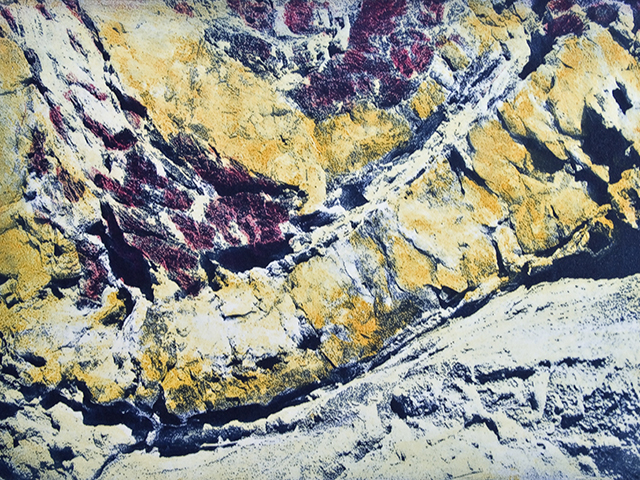
South Stack © John Hedley
John Hedley - Fingertips in Time
John's unique work combines photography with more tradition intaglio printmaking methods.
The majority John's images are from geological formations in GeoMôn UNESCO Global Geopark in Ynys Môn, which is one of 2 geoparks in Wales. He looks at the natural processes in nature like corrosion, erosion and layering and compares them to the same in printmaking. There are also some geological images from the Greek island of Crete. Many of these geological formations found in North Wales and Crete are very similar and John is particularly interested in the fact that although similar, these are hundreds of millions of years younger than those of Ynys Môn.
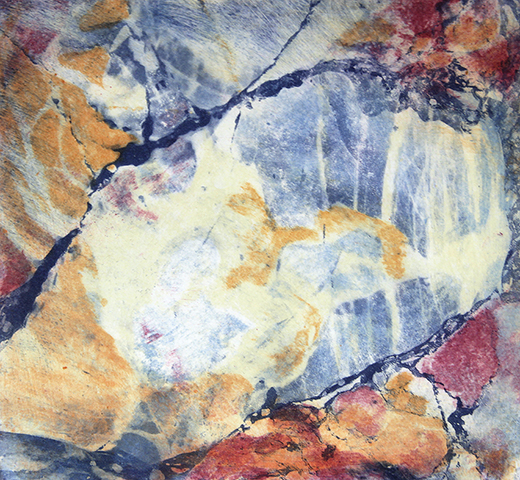
Pebble in Melange -Llanddwyn © John Hedley
Fingertips in Time explores imagery for so long exclusive to the natural sciences. They are impressions that respect – even venerate – the visual mystery at the heart of this subject matter.
The stress, layering and cracking in the printing process is analogous to processes in geology. The timeless quality of the flowing matter that created the rock seems to reside within the image.
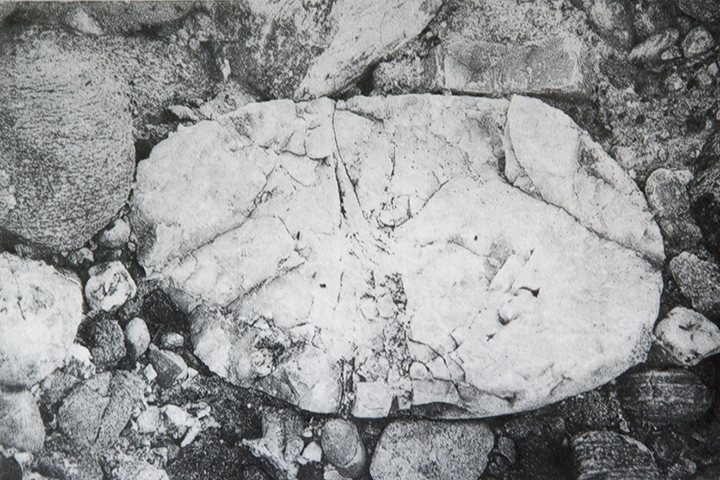
Aigos Galini © John Hedley
Tree studies are also featured, these grow in response to light and environment and their form, like rocks, is created over many years. The organic abstraction and ambiguous patterns and layering found in the rock and tree formations are helping the work evolve.
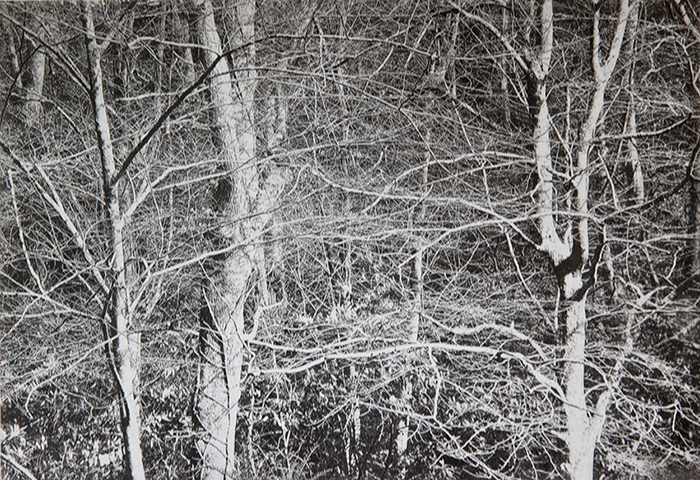
Coed Cadnant © John Hedley
It is the multi-faceted possibilities in the different variations of layering and cracking within trees and rocks that manifest in the existence of nature that inspiring John's work.
Process:
Firstly, John makes an image in Photoshop from his photographs of trees or geological formations. These images are used to form a digital negative on acetate, John then exposes the images onto photopolymer plates using the Natgraph exposure unit at the Regional Print Centre in Wrexham where he also develops them, ready for reworking into Intaglio printmaking.
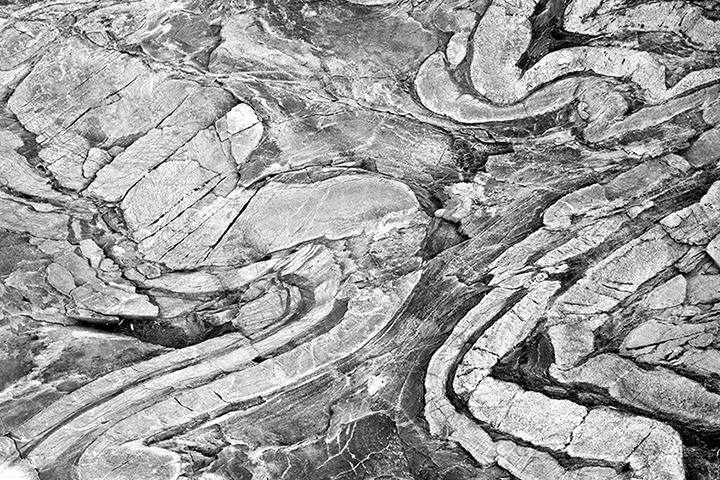
Lime Stone folds - Acetate for photec © John Hedley
Most of these hand printed intaglio prints are one plate photopolymer (solar plate or photec) and 3 to 6 carborudum plates, which are then over printed using colour. Combining photographic digital with more tradition intaglio methods.
They are then printed them onto damp paper on a press in his print studio, offset on to pieces of card and then turned into carborundum plates. John makes between 3 and 6 plates per image and uses two or three colours per plate.
Carborundum grit is mixed with a varnish and then painted on to each plate depending on what colour or tone required. Ink is applied to the plates in the appropriate colours as well as the solar plate and finally they are printed on top of each other using a registration system.
It takes about an hour to print one image and each print is slightly different.
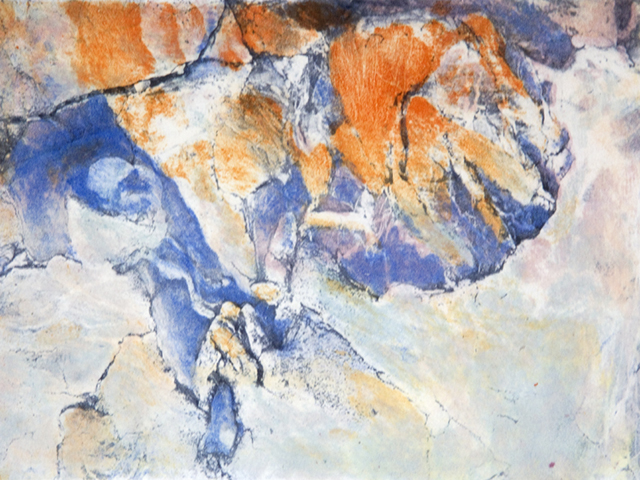
Melange Llanddwyn - © John Hedley
Based in North Wales, John has over many years, developed a deep and sustained interest in visual aspects of the natural sciences, especially geology and arboreal morphology.
Since 2017 John has been funded by the Welsh Arts Council enabling a number of recent one-person exhibitions in public galleries in Wales, including MOSTYN and the Royal Cambrian Academy. 'Fingertips In Time' combines works from these past exhibitions and adds new elements and perspectives to take a fresh look at how photography has been used to inform and create these images.

